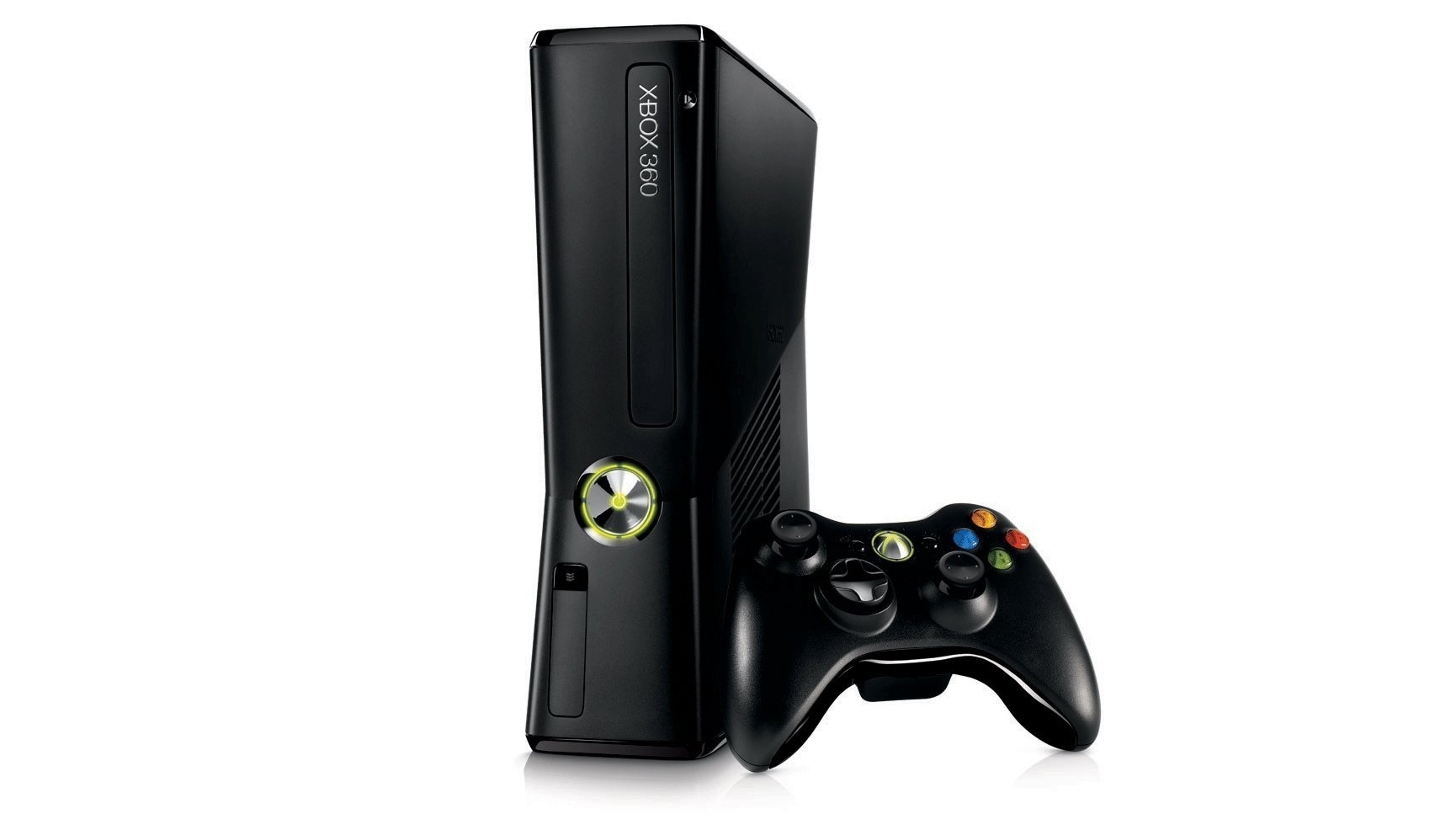Why you can trust TechRadar
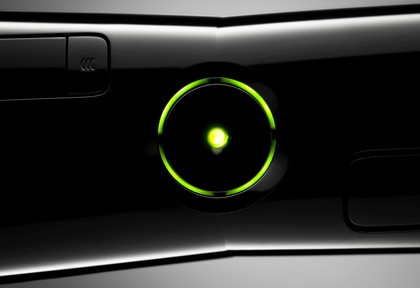
Connect your Xbox 360 to Xbox Live (and with wireless now fitted as standard, you've no excuse not to) and you'll be prompted to download an update to your console, which contains 2011's sweeping dashboard refresh.
While the Metro-based design is too busy to be considered truly handsome, it's borne of necessity. There is an enormous amount of content available to connected Xbox 360 users and the new dashboard does a great job of presenting it all in a logical fashion.
We had gripes with the NXE system that debuted in 2008, because of the jargon-heavy nomenclature of the various menu options. But now you're presented with nine tabs across the top which are visible at all times and have logical titles.
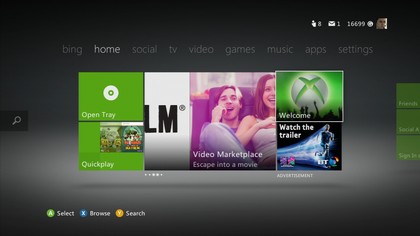
The only potential confusion could come from the division between 'video' and 'tv', the lines of which are being blurred with every passing day. But while the 'tv' tab is the least populated at launch, as on-demand services such as iPlayer, 4oD and Five On Demand arrive on the service, that division will seem much more logical as another way to sort and subdivide the astonishing amount of media available to you.
The 'video' tab is the preserve of movies and the forthcoming YouTube application.
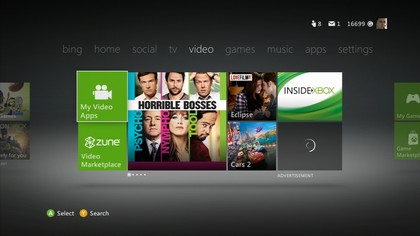
Similarly at launch the apps tab provides a number of redundant links to features that can be accessed elsewhere, such as the Zune Video and Zune Music marketplaces, both of which are also in their relevant tabs, and Sky Go which sits in the 'tv' tab.
While there's unlikely to ever be as wide a range as Apple's app store, if Microsoft is canny it'll have apps that are cross platform compatible with Windows Phone 7 equivalents. At the moment though, this is arguably the biggest unknown on the Xbox 360 – less a case of anticipation as just waiting.
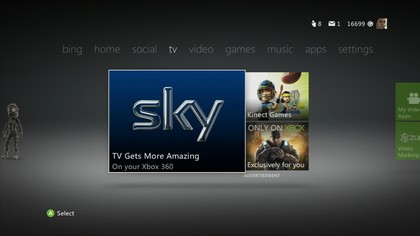
Games have actually been made more awkward to get to. While the disc in the tray (still the priority for most users) can be accessed from the first panel on the home screen, if you have an extensive selection of titles downloaded from Xbox Live Arcade, you have to navigate four tabs over to view them all.
Microsoft clearly feels that gamers will be more prepared to explore the interface than casual users, but the problem could easily be solved by a customisable home tab, something that feels more and more like a glaring omission the longer you spend with the dashboard.
Of course, the Guide button menu, activated by pressing the silver Xbox motif on any controller, remains largely the same as it always was and the savvier gamers may find that this is the most efficient way to get at what the console was originally designed for.
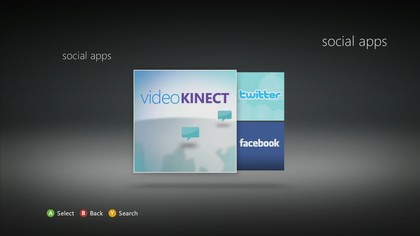
For everyone else, it would be easy for the amount of available content to become overwhelming and for that, Microsoft has included Bing-branded search functions. As an attempt to promote its ailing search brand, which currently claims less than four per cent of UK searches, it's likely to be a busted flush, but as a means to sift through the movies, games and music on Xbox Live it's a godsend.
If you're a huge Batman fan, simply searching for Batman will bring up all Batman related content available on Xbox Live.
That means games, movies and even original soundtracks from the Zune Music marketplace. If that scattergun approach is too much, searching specifically for 'Batman games' will prioritise downloadable content relating to those and even full games on demand. It's impressive stuff and a brisk education in just how much there is for sale through your Xbox.

If you're not keen on navigating using the Xbox pad that, while brilliant for twin-stick shooters or precise racing games, still suffers from a doughy directional pad, you can use Kinect for either gesture or voice control.
It's pleasing that it's no longer ghettoised in a separate menu, but in practice, Kinect control largely feels like a novelty. Sweeping between the different tabs and using a hand cursor to select the various panels is absolutely as efficient and precise as Kinect has ever been.
There has clearly been plenty of time spent tuning it. But unless you don't have a controller to hand or simply aren't as accustomed to their use, it's still a less efficient way to navigate the dash.
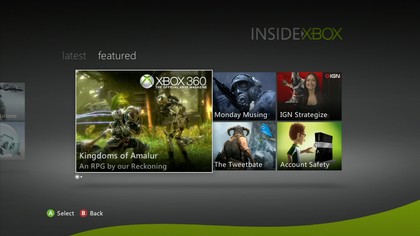
It's a similar story with voice. While you can bark the name of any of the tabs and be whisked there, you can only 'say what you see'. Memorising longer phrases in an attempt to dig into secondary and tertiary layers of the interface bears no fruit, meaning you'll have to insert pauses into your speech patterns.
Also, given that many Xbox 360s have a microphone in the shape of an Xbox Live headset, the fact that voice control is limited to Kinect owners feels like a cynical, artificial restriction.
Voice control's only real triumph is when it comes to Bing searches. From anywhere on the dashboard, saying 'Xbox, Bing' and then a search term will perform a near instantaneous search. It recognises a remarkable number of phrases too, meaning you can say actor names, obscure game titles and even the odd profanity and it will do an impressive job of obliging.
What the dashboard does offer you though is freedom of choice. Whether you're most comfortable with controller, gesture, voice or some combination of the three, the entire interface supports it and that's to be applauded.
James was part of the TechRadar editorial team for eight years up until 2015 and now works in a senior position for TR's parent company Future. An experienced Content Director with a demonstrated history of working in the media production industry. Skilled in Search Engine Optimization (SEO), E-commerce Optimization, Journalism, Digital Marketing, and Social Media. James can do it all.
